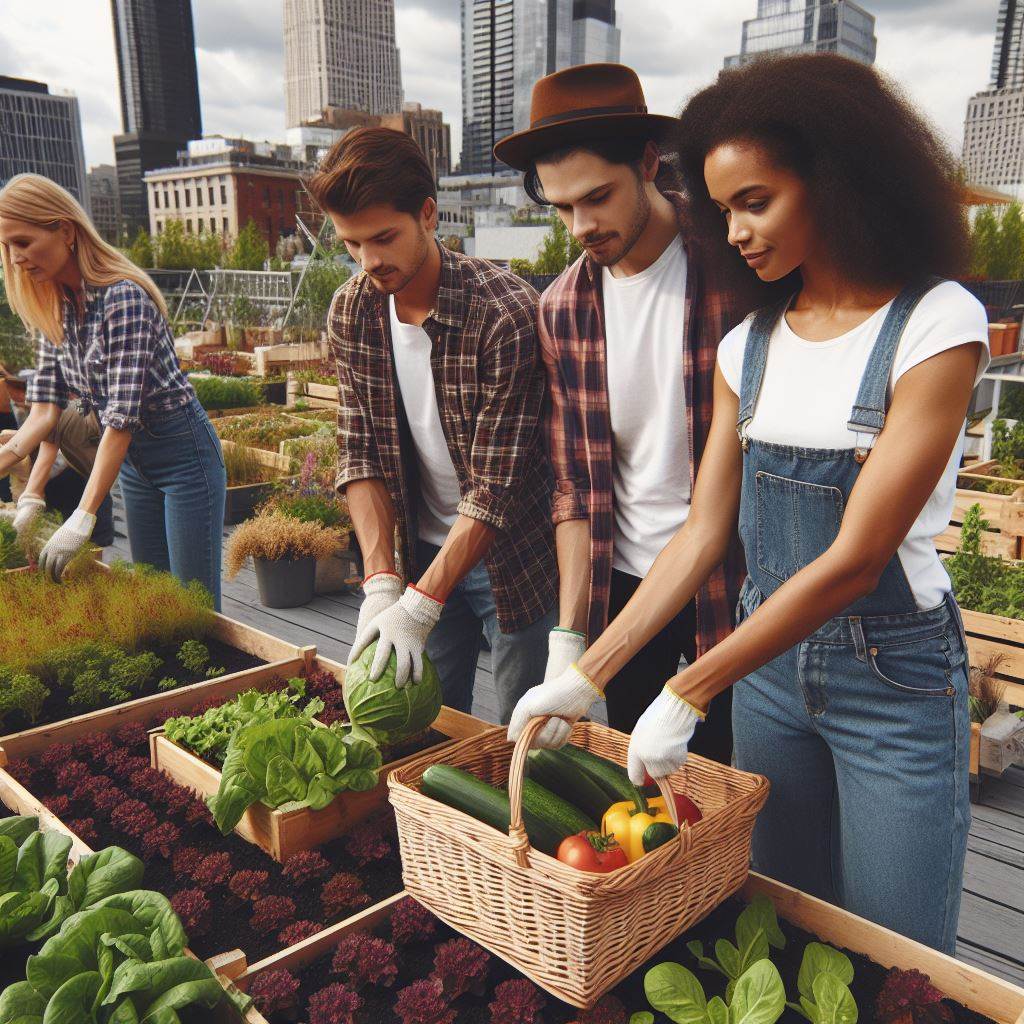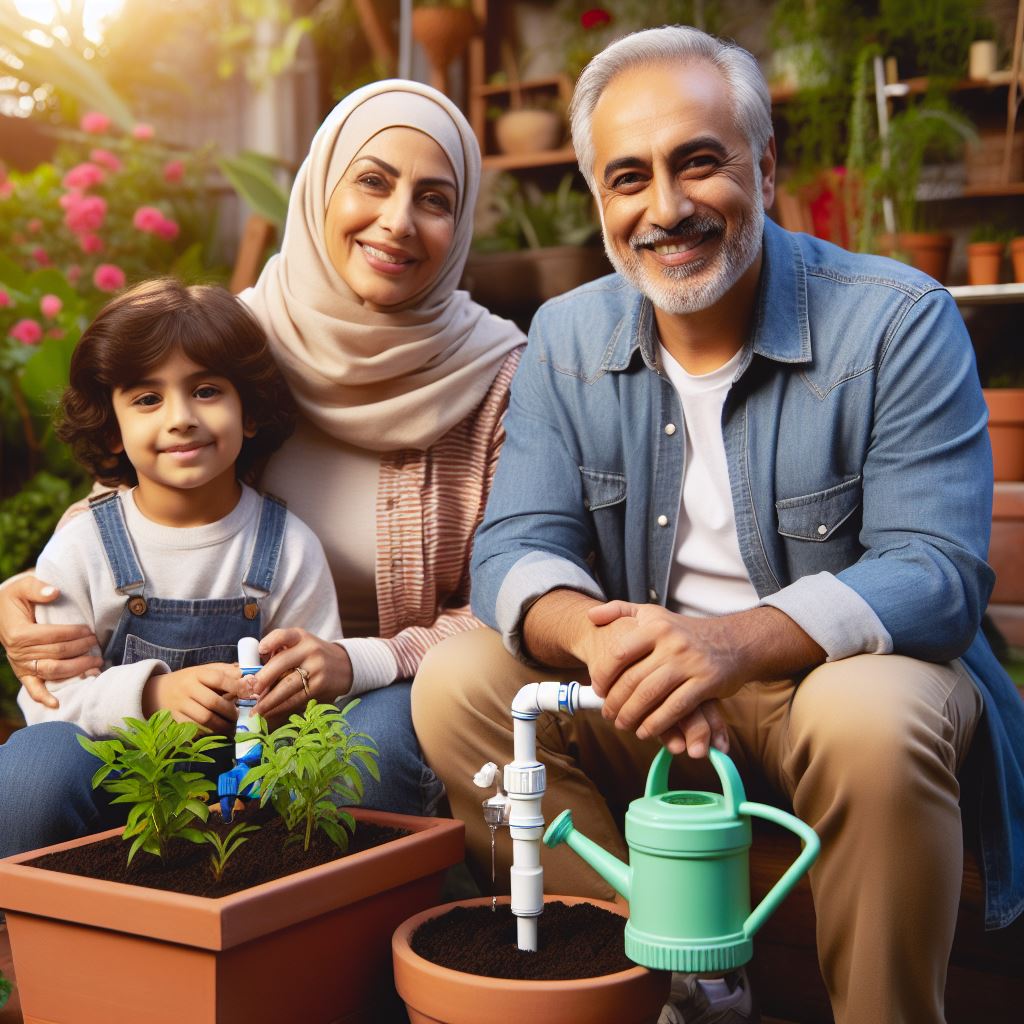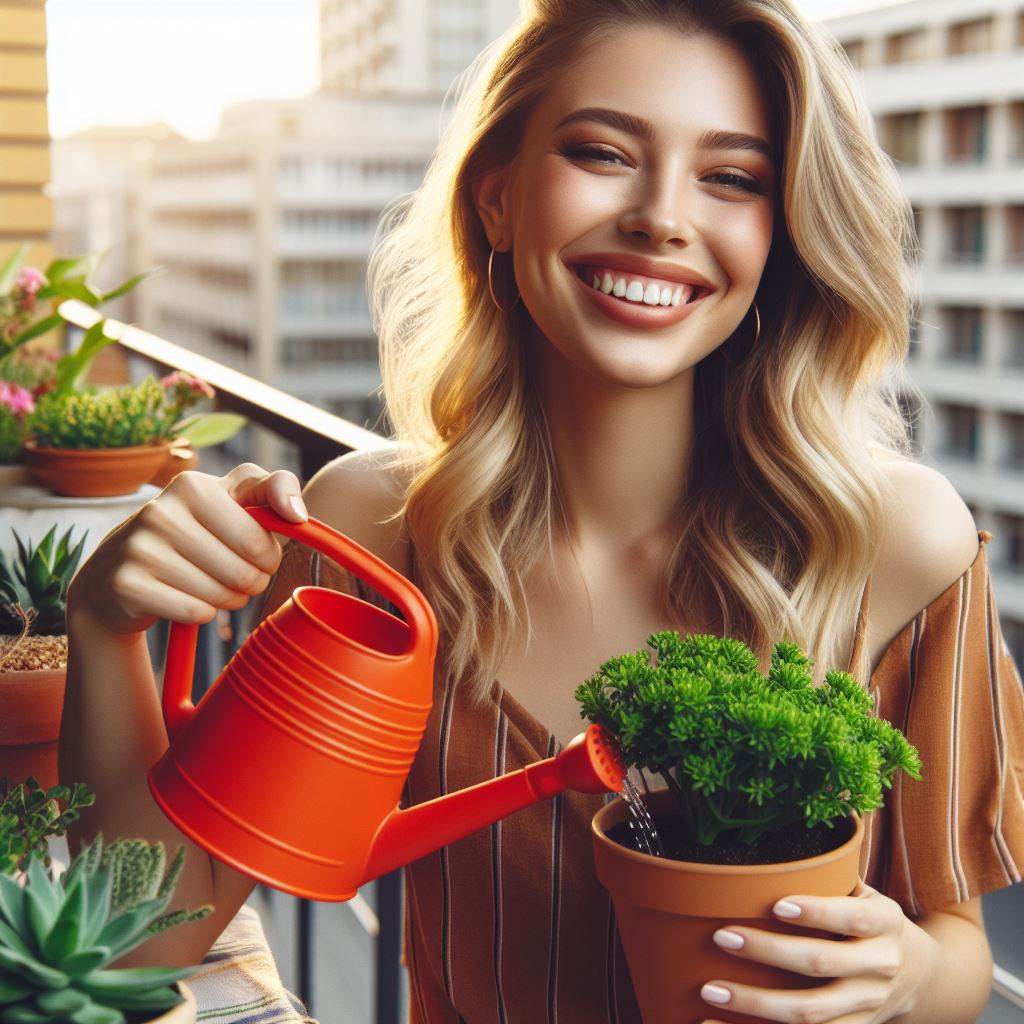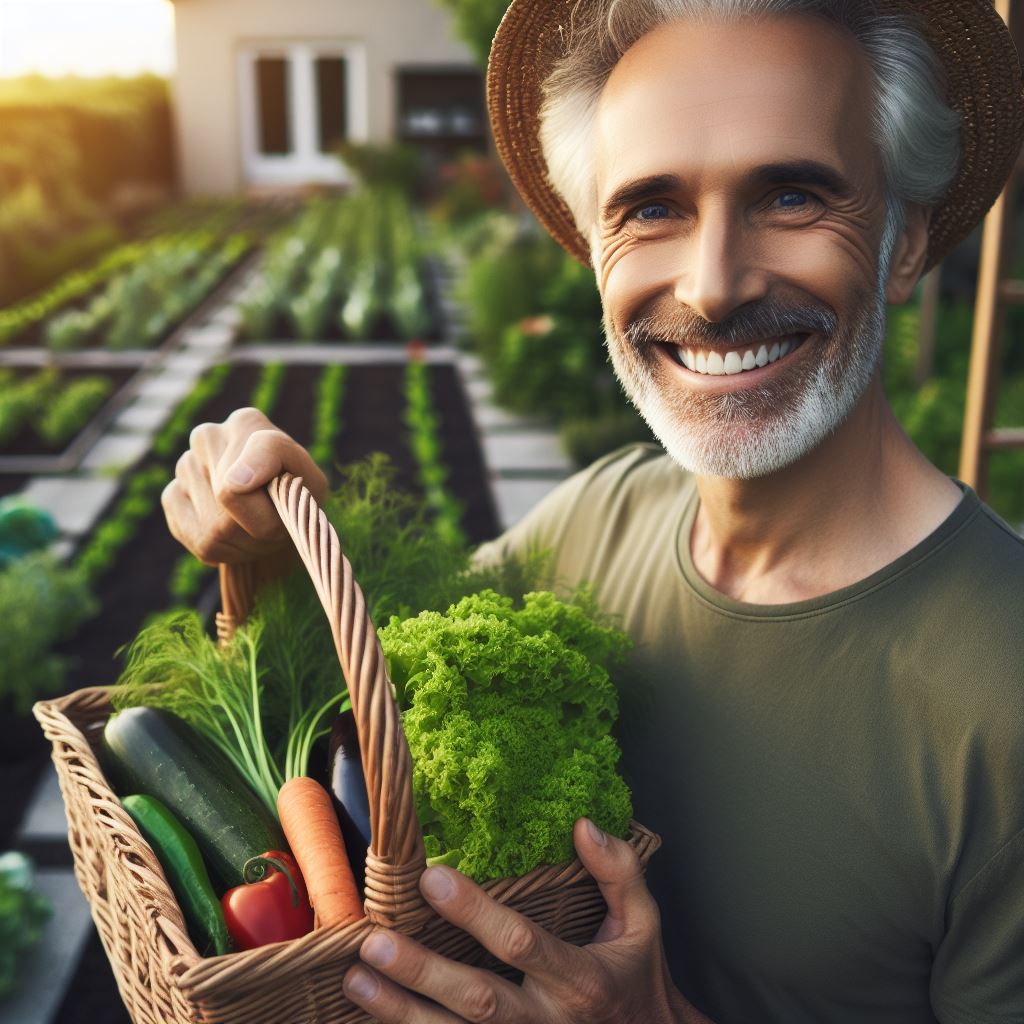Introduction
A. Importance of Patio Farming
- Elevate Your Space: Transforming a patio into a productive haven enhances both aesthetics and functionality.
- Sustainable Living: Embrace eco-friendly practices by growing your own produce right on your doorstep.
- Connection with Nature: Patio farming fosters a sense of connection with the environment, promoting well-being.
B. Benefits of Container Crops
- Space Maximization: Utilize limited space efficiently with container gardening, ideal for urban dwellers.
- Mobility: Easily rearrange and relocate containers to optimize sunlight exposure and environmental conditions.
- Reduced Weeding: Containers minimize weed invasion, making maintenance a breeze for busy individuals.
- Pest Control: Control pests more effectively by isolating crops in containers, protecting your yield.
- Season Extension: Prolong your growing season by bringing containers indoors during colder months, ensuring year-round harvests.
- Water Conservation: Containers facilitate precise watering, reducing water wastage and promoting conservation.
Incorporating patio farming and container crops into your lifestyle promises a seamless blend of practicality and sustainability.
Choosing the Right Containers
A. Size and Material Considerations
- Consider the size of your plants when choosing containers.
- Larger plants require bigger containers to accommodate their root systems.
- Smaller plants can thrive in smaller containers, but avoid overcrowding them.
- Choose containers made from durable materials like plastic, clay, or wood.
- Plastic containers are lightweight, easy to move, and retain moisture well.
- Clay containers are porous and allow for better airflow to the roots.
- Wooden containers provide insulation and can enhance the aesthetics of your patio.
B. Drainage Requirements
- Proper drainage is essential for the health of your patio crops.
- Look for containers with drainage holes in the bottom to prevent waterlogged soil.
- If your chosen container does not have drainage holes, create them using a drill or hammer.
- Elevate your containers with pot feet or bricks to ensure water can easily flow out.
- Avoid using saucers under your containers as they can lead to standing water.
C. Consideration for Different Types of Plants
- Different plants have varying needs when it comes to containers.
- For shallow-rooted plants, choose wider containers to provide ample space for spreading.
- Deep-rooted plants, on the other hand, benefit from deeper containers to accommodate their roots.
- Hanging baskets are ideal for trailing plants like vines or herbs.
- Some plants, like tomatoes or peppers, require larger containers due to their size and growth patterns.
- Group plants with similar needs together to make watering and care easier.
- Consider vertical gardening options for limited patio space by using trellises or hanging planters.
In general, choosing the right containers for your patio farming endeavors is crucial for the success of your crops.
Consider the size and material of the containers based on the needs of your plants.
Ensure proper drainage to avoid waterlogged soil and promote healthy growth.
Additionally, take into account the specific requirements of different types of plants when selecting containers.
By carefully choosing the right containers, you can create an ideal environment for your patio crops and maximize your gardening success.
Read: Organic Garden Pest Identification Guide
Essential Supplies and Tools
Having all the necessary supplies and tools is essential for successful patio farming.
These items enable you to create a suitable environment for your container crops, promoting healthy growth and maximizing yield.
A. High-quality soil mix
The primary requirement for any patio farmer is a high-quality soil mix.
Unlike garden soil, which may lack essential nutrients, a specialized soil mix is enriched with organic matter, minerals, and other beneficial components.
This provides an ideal growing medium for your plants.
B. Fertilizers and amendments
Additionally, fertilizers and amendments are essential for replenishing nutrients in the soil.
Patio crops are confined to containers, so regular feeding becomes even more critical.
By incorporating fertilizers and organic amendments, you ensure that your plants receive the necessary nutrients for healthy growth and development.
Transform Your Agribusiness
Unlock your farm's potential with expert advice tailored to your needs. Get actionable steps that drive real results.
Get StartedC. Watering cans or hoses
Watering is another crucial aspect of patio farming.
Using watering cans or hoses allows you to provide adequate moisture for your container crops.
The right watering technique will help prevent overwatering or underwatering, which can harm your plants.
Invest in watering equipment that suits your needs and enables easy and efficient watering.
D. Gardening gloves and tools
When working in your patio garden, it is important to protect your hands and use appropriate tools.
Gardening gloves shield your hands from cuts, scrapes, and thorns.
Basic tools like trowels, hand pruners, and a shovel are indispensable for transplanting, pruning, and general maintenance tasks.
E. Labels and markers for organization
To maintain organization in your patio garden, consider using labels and markers.
This helps you keep track of what you’re growing and where it is located.
By labeling your plants, you can identify specific varieties or track growth progress.
This organization simplifies care and ensures that each plant receives the attention it needs.
In essence, having the essential supplies and tools is vital for successful patio farming.
A high-quality soil mix provides a nutrient-rich foundation, while fertilizers and amendments replenish nutrients in the container environment.
Watering cans or hoses enable proper hydration, and gardening gloves and tools facilitate efficient maintenance.
Labels and markers aid in organization, making it easier to manage your patio garden.
With the right supplies and tools, you can create a thriving container garden and enjoy the benefits of homegrown produce.
Read: Aquaponic Harvest: Growing Veggies & Fish
Suitable Crops for Patio Farming
A. Leafy greens and herbs
- Lettuce: Lettuce is a popular choice for patio farming due to its compact size and fast growth. It thrives in containers and can be harvested multiple times throughout the season.
- Spinach: Spinach is another excellent option for patio farming. It requires minimal space and can be grown in containers all year round, providing a continuous supply of fresh greens.
- Basil: Basil is a versatile herb that can be grown in containers on your patio. It loves warm weather and requires regular watering and full sunlight to grow healthy and flavorful.
B. Fast-growing veggies
- Tomatoes: Tomatoes are a staple in many kitchens and can be successfully grown in containers on your patio. Choose determinate varieties for their compact size and fast fruiting.
- Radishes: Radishes are a great choice for beginners in patio farming. They are quick to grow and can be harvested within a month of planting, making them an ideal crop for small spaces.
- Zucchini: If you have a larger container or planter box, consider growing zucchini on your patio. This summer squash is fast-growing and produces bountiful harvests in a short period.
C. Compact fruits
- Strawberries: Strawberries can be grown in pots or hanging baskets, making them an excellent choice for patio farming. They require well-draining soil, ample sunlight, and regular watering.
- Blueberries: Blueberries can be successfully grown in containers on your patio, provided they receive enough sunlight and acidic soil. They are a delicious and nutritious addition to any garden.
- Dwarf citrus trees: For those with larger patio spaces, dwarf citrus trees can be a delightful addition. Varieties like lemons, limes, and oranges can thrive in containers and provide fresh fruits.
Patio farming opens up countless possibilities for growing your own food, even with limited space.
Whether you opt for leafy greens and herbs or fast-growing veggies and compact fruits, there is something for everyone to enjoy.
With a little care and attention, you can cultivate a thriving patio garden that brings both beauty and sustenance to your outdoor space. Happy patio farming!
Read: Urban Oasis: Aquaponic Gardening Basics
Proper Care and Maintenance
A. Sunlight and positioning
- Ensure that your patio farm receives adequate sunlight by placing it in a sunny spot.
- Position your containers so that they are not overshadowed by buildings or trees.
- Rotate your containers occasionally to ensure that all sides of the plants receive equal sunlight exposure.
- Consider using reflective surfaces to maximize the amount of sunlight reaching your plants.
B. Watering and drainage management
- Regularly check the moisture level of the soil in your containers.
- Water your patio crops deeply and thoroughly, making sure the water reaches the roots.
- Avoid overwatering by allowing the soil to dry out slightly between watering sessions.
- Use self-watering containers or drip irrigation systems to ensure consistent and efficient watering.
- Ensure proper drainage by using containers with drainage holes or adding a layer of gravel at the bottom.
C. Fertilizer application
- Choose a balanced fertilizer specifically formulated for container crops.
- Follow the instructions on the fertilizer package for proper application rates.
- Apply fertilizers during the growing season to provide essential nutrients for healthy plant growth.
- Consider using organic fertilizers to minimize the risk of chemical buildup in the soil.
D. Monitoring for pests and diseases
- Regularly inspect your plants for signs of pests such as aphids, mealybugs, or spider mites.
- Remove any pests you find manually or use organic pest control methods if necessary.
- Monitor your plants for common diseases such as powdery mildew or fungal infections.
- Treat diseases promptly with organic fungicides or consult with a specialist if needed.
E. Pruning and harvesting techniques
- Prune your patio crops to remove dead or diseased plant parts and promote healthy growth.
- Regularly trim back overgrown branches or vines to maintain the desired shape and size of your plants.
- Use sharp pruning shears to make clean cuts and minimize the risk of damage.
- Harvest your crops when they reach peak ripeness to enjoy the best flavor and nutritional value.
- Research proper harvesting techniques for each specific crop to ensure optimal results.
Proper care and maintenance are essential for a successful patio farming experience.
By providing adequate sunlight, managing watering and drainage, applying fertilizer, monitoring for pests and diseases, and employing proper pruning and harvesting techniques, you can ensure the health and productivity of your container crops.
With attention to these factors, you will be rewarded with a bountiful and thriving patio farm.
Showcase Your Farming Business
Publish your professional farming services profile on our blog for a one-time fee of $200 and reach a dedicated audience of farmers and agribusiness owners.
Publish Your ProfileRead: From Water to Table: Hydroponic Growing
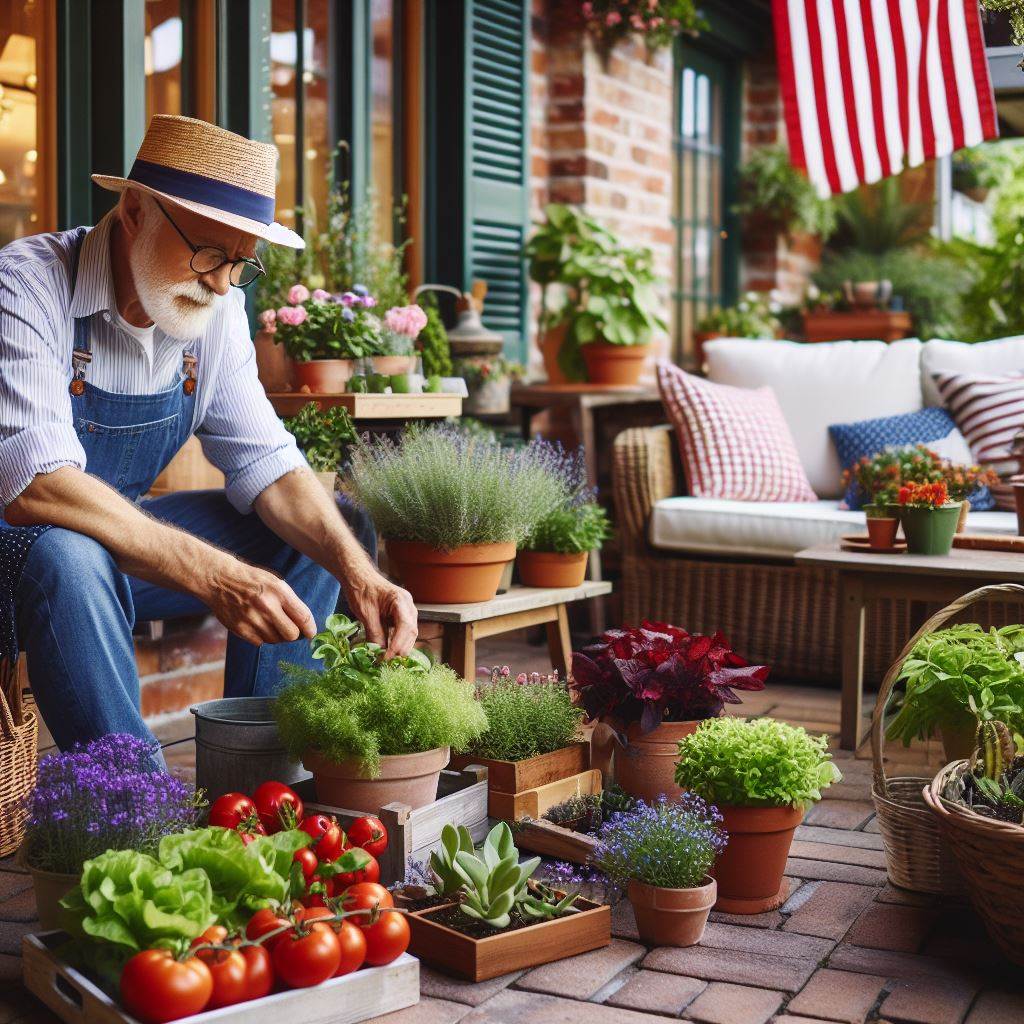
Troubleshooting Common Issues
A. Overwatering or underwatering
- Check the moisture level of the soil by sticking your finger about an inch deep.
- If the soil feels dry, water the plants thoroughly until the water drains out of the container.
- Avoid overwatering by allowing the top inch of soil to dry out before watering again.
- If the soil feels too wet or the plant shows signs of root rot (wilting, yellowing leaves), reduce watering.
B. Nutrient deficiencies or imbalances
- Observe the leaves for yellowing, browning, or stunted growth, which may indicate nutrient problems.
- Use a balanced organic fertilizer to provide essential nutrients like nitrogen, phosphorus, and potassium.
- Follow the recommended dosage instructions on the fertilizer package to avoid overfeeding the plants.
- Conduct a soil test to determine specific nutrient deficiencies and adjust the fertilizer accordingly.
C. Pests and diseases
- Regularly inspect your plants for signs of pests such as aphids, mealybugs, or spider mites.
- Use natural pest control methods like insecticidal soap, neem oil, or introducing beneficial insects.
- Remove infected or damaged plant parts to prevent the spread of diseases like fungal infections.
- Provide proper air circulation and maintain cleanliness to minimize the risk of disease.
D. Insufficient sunlight or improper positioning
- Ensure that your container crops receive at least six hours of direct sunlight daily.
- Position the containers in a location with adequate sunlight, which may require moving them throughout the day.
- Monitor the plants for signs of insufficient sunlight, such as elongated stems or pale, weak growth.
- Consider using reflective surfaces or artificial grow lights to supplement natural sunlight if necessary.
Remember, successful patio farming requires regular monitoring and attention to address these common issues.
By troubleshooting and resolving problems promptly, you can ensure the health and productivity of your container crops.
Harvesting and Utilizing the Crops
A. Indications of readiness to harvest
- Observe the color and texture of the crops, ensuring they appear ripe and firm.
- Check for any signs of spoilage or disease, such as mold or rot.
- Gently tug on the vegetables and fruits to see if they easily detach from the plant.
B. Proper harvesting techniques
- Use sharpened pruning shears or scissors to cut the crops at the stem, avoiding any damage.
- Harvest leafy greens by plucking the outer leaves while leaving the inner ones to continue growing.
- Be careful not to damage the neighboring crops while harvesting to preserve the overall garden.
C. Recipe ideas and suggestions for utilizing the produce
- Create fresh and vibrant salads using leafy greens like spinach, lettuce, and kale.
- Roast root vegetables such as carrots, beets, and potatoes with olive oil and spices for a flavorful side dish.
- Blend ripe tomatoes, cucumbers, and peppers to make a refreshing homemade gazpacho soup.
- Make a delicious stir fry using harvested bell peppers, snap peas, and broccoli florets.
- Bake a mouthwatering zucchini bread or muffins by shredding the harvested zucchinis and adding them to the batter.
- Experiment with pickling techniques to preserve excess cucumbers and radishes for later use in sandwiches and salads.
- Sauté freshly harvested green beans with garlic and butter for a simple yet tasty side dish.
- Combine herbs like basil, parsley, and cilantro with olive oil and garlic to make flavorful homemade pesto.
- Use harvested strawberries and blueberries to make a fruity and refreshing summer smoothie.
D. Additional Ideas
- Harvested herbs, such as rosemary or thyme, can be dried and stored for later use in various recipes.
- Utilize excess crops by sharing with friends, neighbors, or local food banks to reduce waste.
- Create your own signature salsa by combining harvested tomatoes, onions, peppers, and herbs.
- Experiment with juicing, using a variety of juiced vegetables and fruits for a nutrient-rich and refreshing drink.
- Incorporate freshly harvested herbs and vegetables into homemade pasta sauces for a burst of fresh flavors.
- Freeze excess fruits to use in smoothies, baked goods, or as a topping for yogurt and cereal.
In a nutshell, harvesting and utilizing the crops from your patio farm is a rewarding experience.
By observing the indications of readiness to harvest, using proper techniques, and exploring recipe ideas, you can make the most of your container crops and enjoy the delicious flavors of homegrown produce.
So go ahead, get creative, and savor the fruits of your labor!
Conclusion
A. Recap of key points
Throughout this blog post, we have explored the concept of patio farming and its benefits.
We discussed various easy container crops that are suitable for patio farming, such as herbs, tomatoes, lettuce, and peppers.
We learned about the importance of choosing the right containers, using quality soil, providing adequate sunlight and water, and employing proper maintenance techniques.
B. Encouragement to get started with patio farming
Now that you are familiar with the basics of patio farming and have gained knowledge about the different container crops, it’s time to get started!
Don’t be intimidated by the idea of gardening in limited space. Patio farming is not only possible but also incredibly rewarding.
With a bit of dedication and care, you can grow your own fresh and healthy produce right outside your door.
Imagine the satisfaction of plucking ripe tomatoes from your own patio garden, harvesting fragrant herbs for your culinary creations, or enjoying crisp lettuce leaves in your salads – all grown by your own hands.
Furthermore, patio farming allows you to have greater control over the quality and safety of the food you consume, as you know exactly what goes into its cultivation.
So, gather your containers, select your favorite crops, and start your patio farming journey.
Experiment, learn from your experiences, and enjoy the process of watching your plants thrive.
As you continue with your patio farming endeavors, you’ll develop a deeper connection with nature and a heightened appreciation for the food you grow.
Don’t let the size of your outdoor space limit your gardening ambitions; instead, embrace the opportunities that patio farming offers.
With determination and creativity, you can transform your patio into a lush and productive oasis.
By taking this small step towards sustainable living, you’ll not only reap the rewards of fresh produce but also contribute to a greener and healthier planet.
Happy patio farming!

